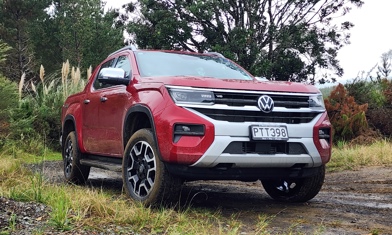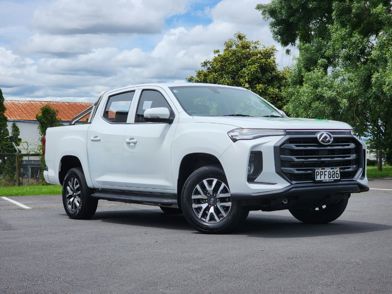The enormous popularity of double-cab utes in New Zealand is partly due to their dual-purpose appeal. Utes are technically work vehicles of course, but their cool image and some very deliberate gentrification by carmakers in recent years also makes them highly desirable as family and weekend transport.
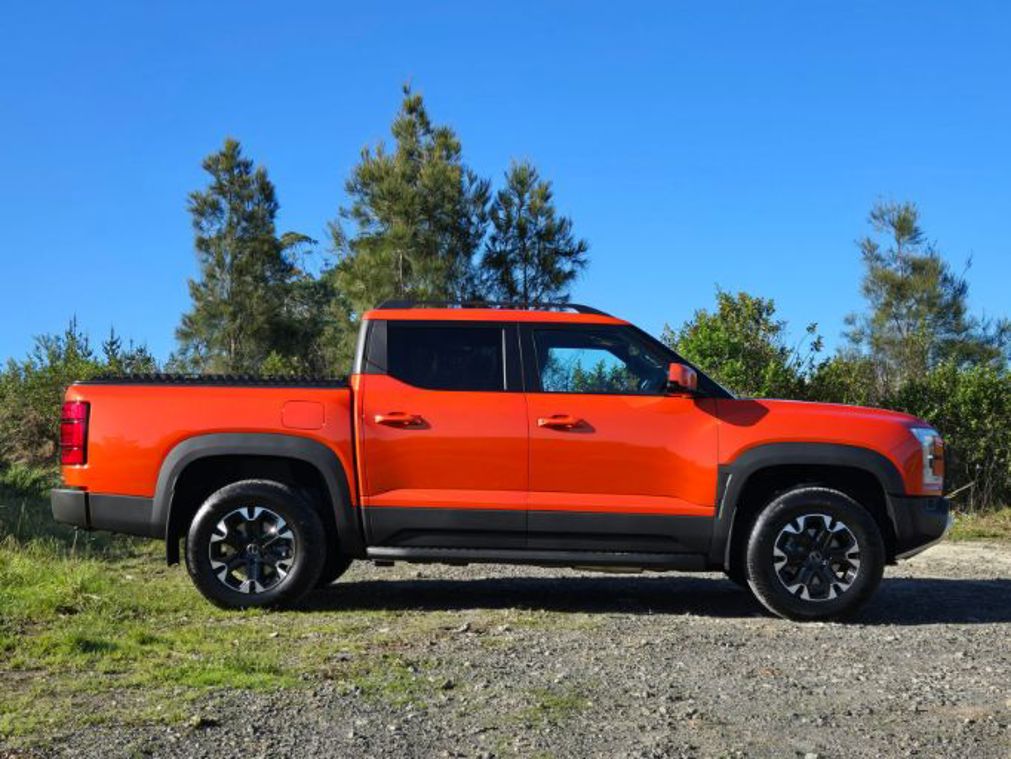
No question that the BYD Shark 6 is a game-changer in the Kiwi market. Utes have been, well, utes for so long: trucks with diesel engines that look tough and chug along, with the odd sporty one thrown in (okay, that’s just the Ford Ranger Raptor we’re talking about).
The Shark is positively radical in traditional one-tonne company, with a range-extender-type electric powertrain that offers a claimed 100km zero-emissions driving (NEDC) thanks to a large plug-in battery, but also the ability to shun range-anxiety with the best of them thanks to assistance from a 1.5-litre petrol generator.
The Shark is also an interesting visual presence. There’s only so much you can do with a two-box-plus-wellside design, but BYD seems to have successfully combined the set-square style that ute buyers love with a unique look.
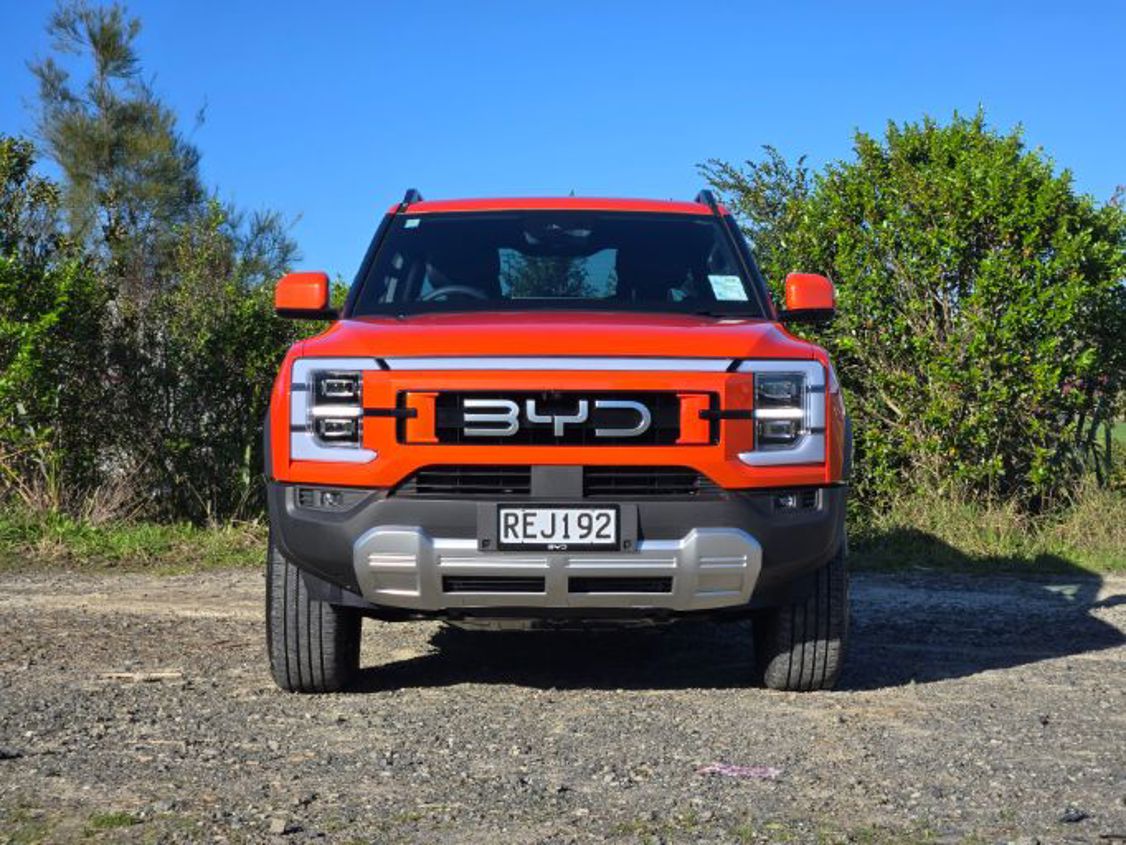
Apologies to the Ranger for those C-clamp-style headlights perhaps, but when you see a Shark coming down the road you really know what it is. There’s huge brand and model-recognition there: it’s already a ute-celebrity in NZ. If you really don’t want to be missed, might we suggest our test model’s $1250 Sunset Orange colour.
No question that the Shark 6 is a game-changer in the Kiwi market. Utes have been, well, just diesel utes for so long.
But anyway. This all begs the question: who’s buying them? “What’s interesting is the big difference between [Shark 6] buyers in Australia and NZ,” says BYD brand manager Warren Willmot. “In NZ, more than 50% of our customers come from fleet and government departments… mainly because they need to reduce CO2 emissions overall and the easiest way to do that is to flip the fleet to low-emissions vehicles.

“From a private buyer perspective, we’re having a lot of customers come out of the traditional ute space, but we’re also finding the return of some people that were buying utes, but shifted away to SUVs; they’re now back, buying the Shark.”
Performance is deeply impressive: not just the instant torque of electric power, but the fact that the Shark 6’s power-to-weight is identical to the Ranger Raptor V6.
The takeaway is that electric power is key to the appeal of this model. To which you might say well, “duh”. But interesting that it’s enough of a draw to bring people back to utes who had shifted to SUVs, especially given Sharky’s size: at 5457mm long and nearly 2m wide, it’s a little bigger than your average one-tonner. You’re certainly glad of that crisp 360-degree camera setup in urban driving.
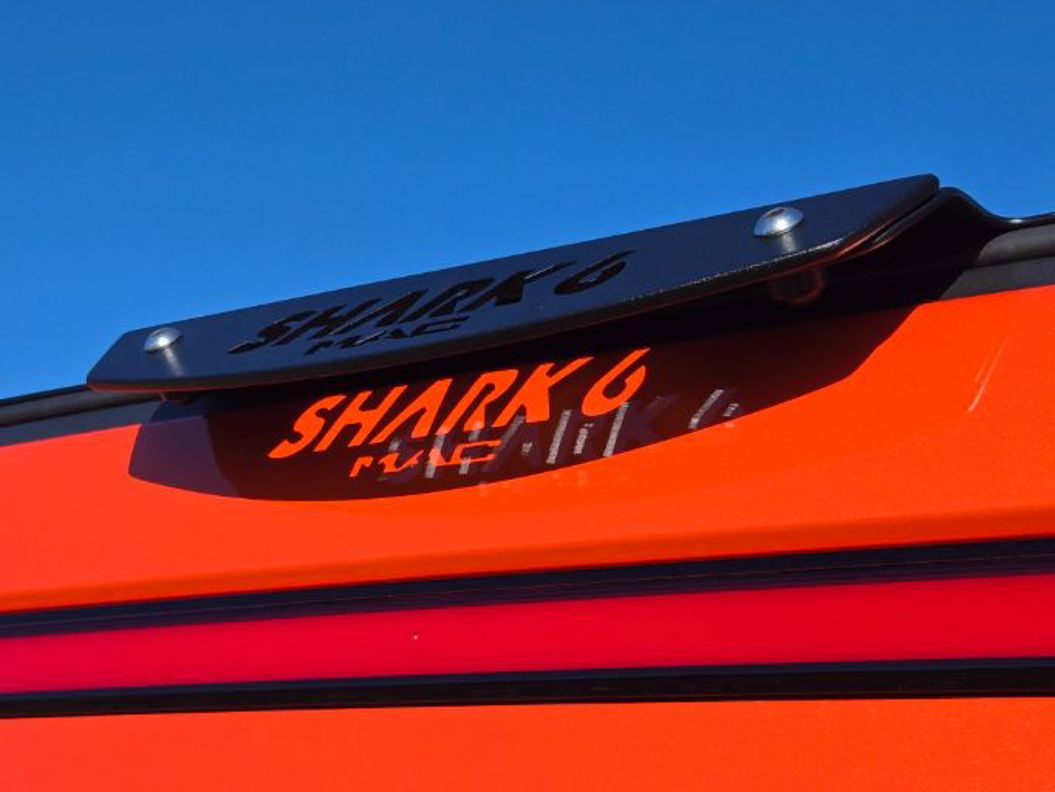
Anyway, that all works for our argument here, because we reckon it makes the most sense to think of the Shark 6 as an EV first – one that just happens to be a ute.
We’d bet that most buyers with a preference for keeping the Shark 6 full-electric will easily be able to do so day-to-day.
The performance is deeply impressive: not just the instant torque of that electric power, but the fact that the Shark 6’s power-to-weight is identical to the Ranger Raptor V6. It’s a properly fast truck 0-100km/h in 5.7sec), albeit equally adept at cruising along in completely relaxed silence.
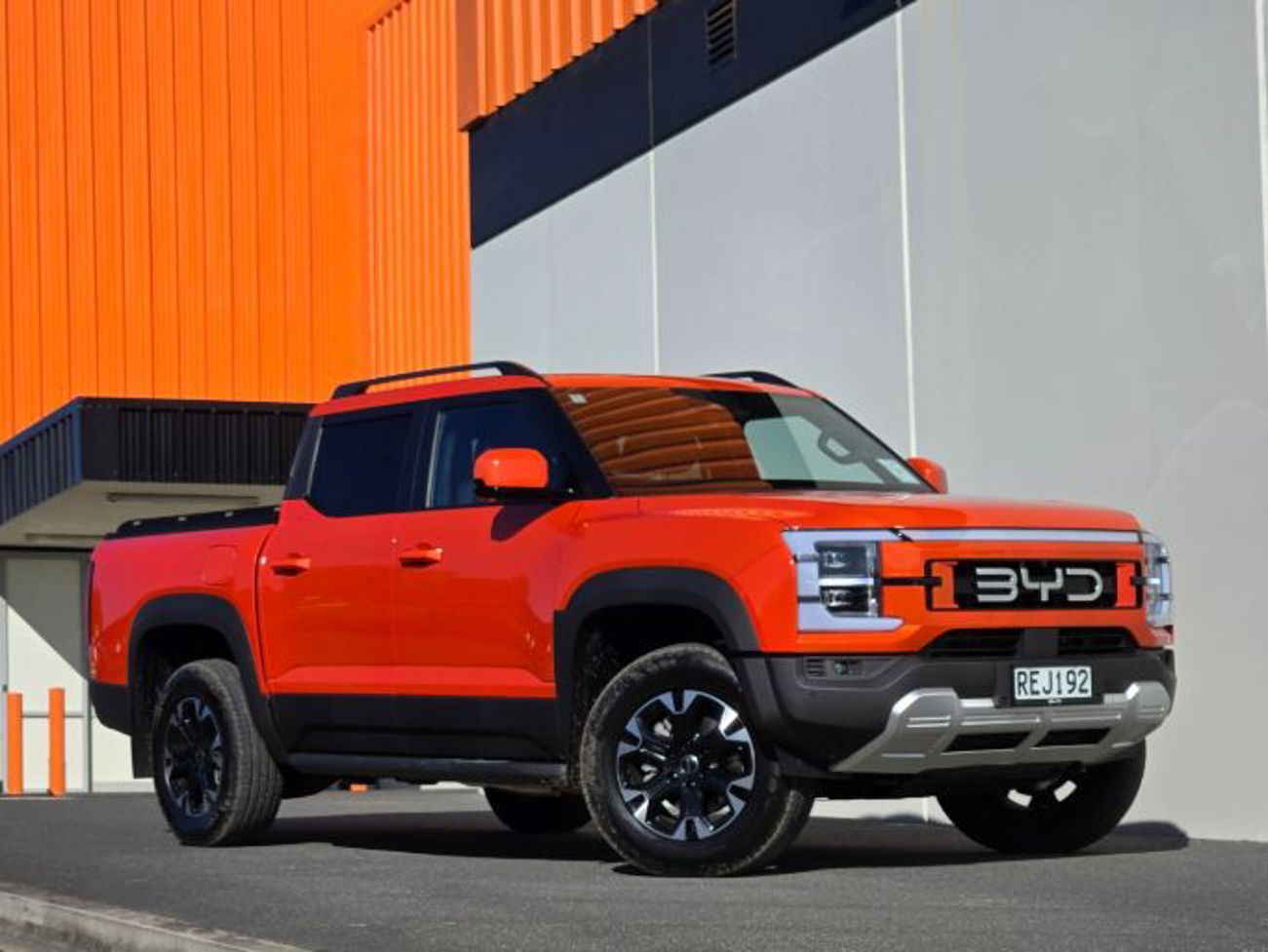
The refinement is outstanding for such a big brick of a thing. Yes, EV power is silent, but what’s remarkable is how well wind and road noise are suppressed. The suspension is also generally smooth over bumps, save the odd thump over sharp undulations that you get in so many heavy EVs.
It handles, too, with the quick reactions of the dual electric motors and quality Continental tyres offering plenty of on-road traction and stability.
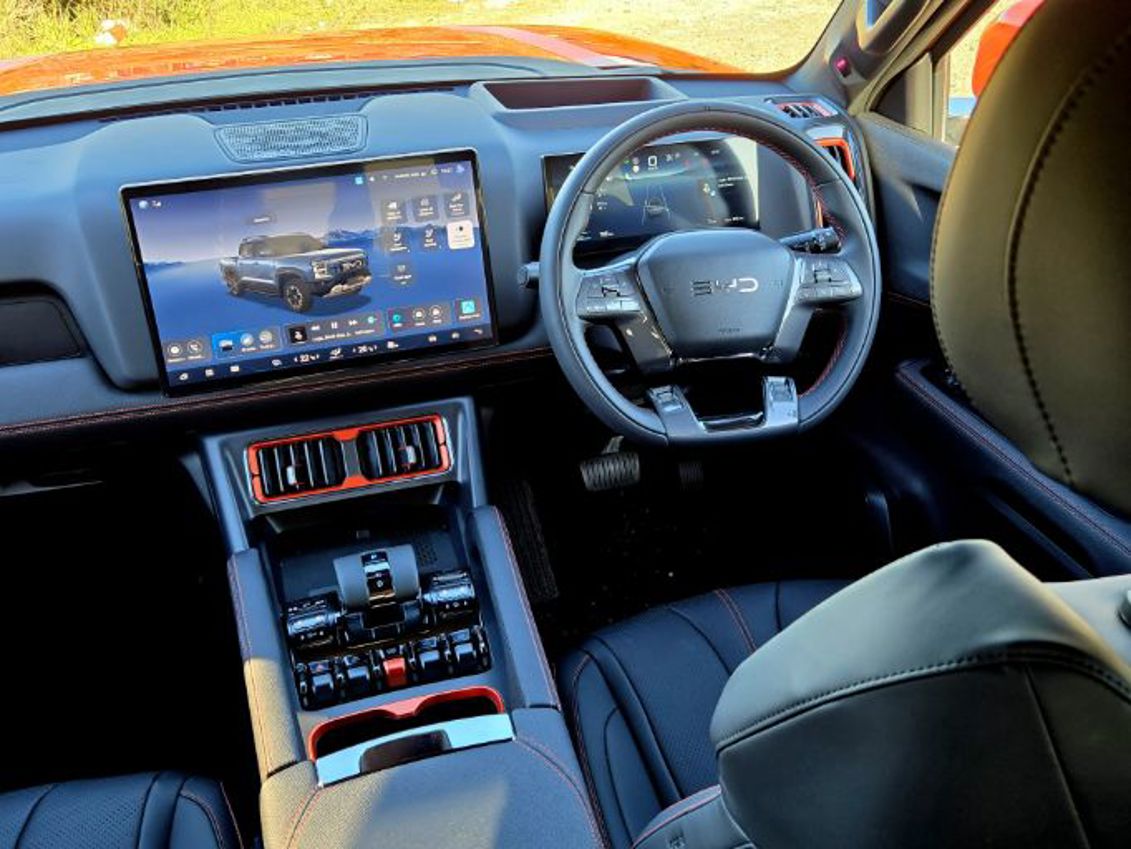
We’d bet that most buyers with a preference for keeping the Shark 6 full-electric will easily be able to do so day-to-day. The claimed NEDC range of 100km is optimistic (BYD doesn’t quote a NZ-specific WTLP figure), but we found 80km easily achievable. If you’re going further than that in a day and really serious about staying pure-electric, you can also fast-charge it on a public station at up to 50kW; but you can also just let the petrol engine fire up and make electricity, until you plug in overnight again.
Indeed, that’s very much the concept of the drivetrain. You can set the desired state of charge for the battery anywhere from 25-75%; although it’s a bit counterintuitive at first, the best way to maximise EV running is to set it at the lowest 25%, so the petrol engine isn’t trying to keep you topped up all the time.
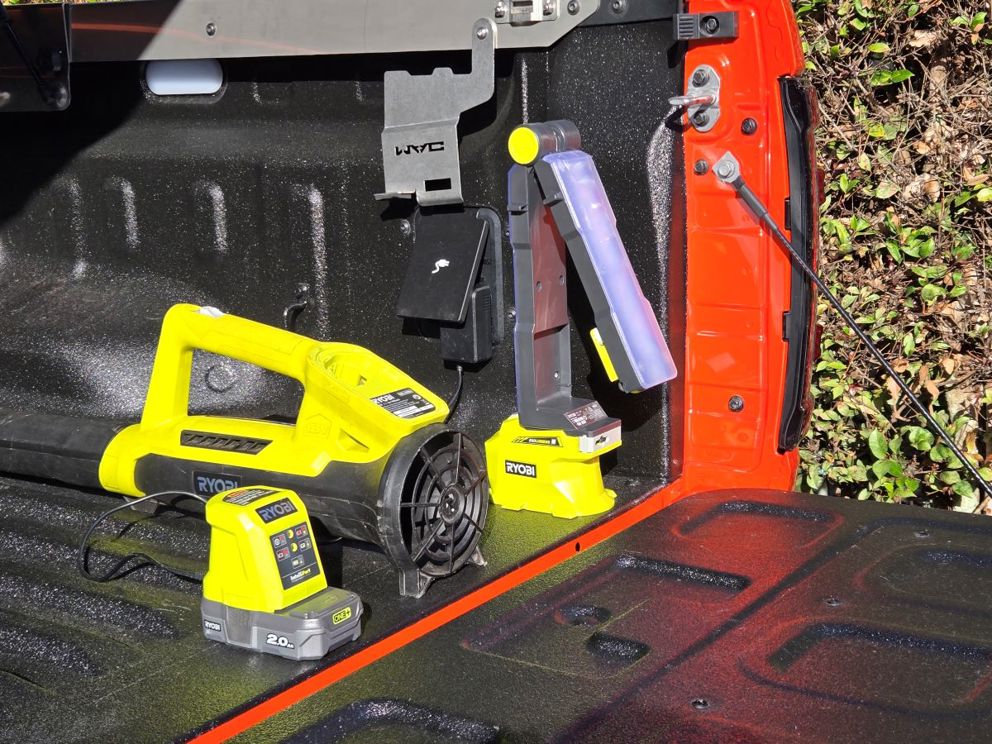
There’s another type of electric-appeal to Shark 6: vehicle-to-load (V2L). It has a trio of power outlets in the tray, another two in the cabin and you get an adaptor with a 5m cord for the main external port, so you can power up to 6 devices using the vehicle battery at any one time – albeit only to a maximum draw of 6kW. For the tray outlets, the vehicle needs to be on – but you can leave it “running” and still lock the doors if you need to.
For a vehicle proving popular with fleets, you’d almost say the single Shark 6 Premium specification is a bit too nice for a work truck. But hey, you deserve it, people. There’s plenty of ute-appropriate chunky switchgear, but the general vibe and fit/finish is very luxury-SUV.
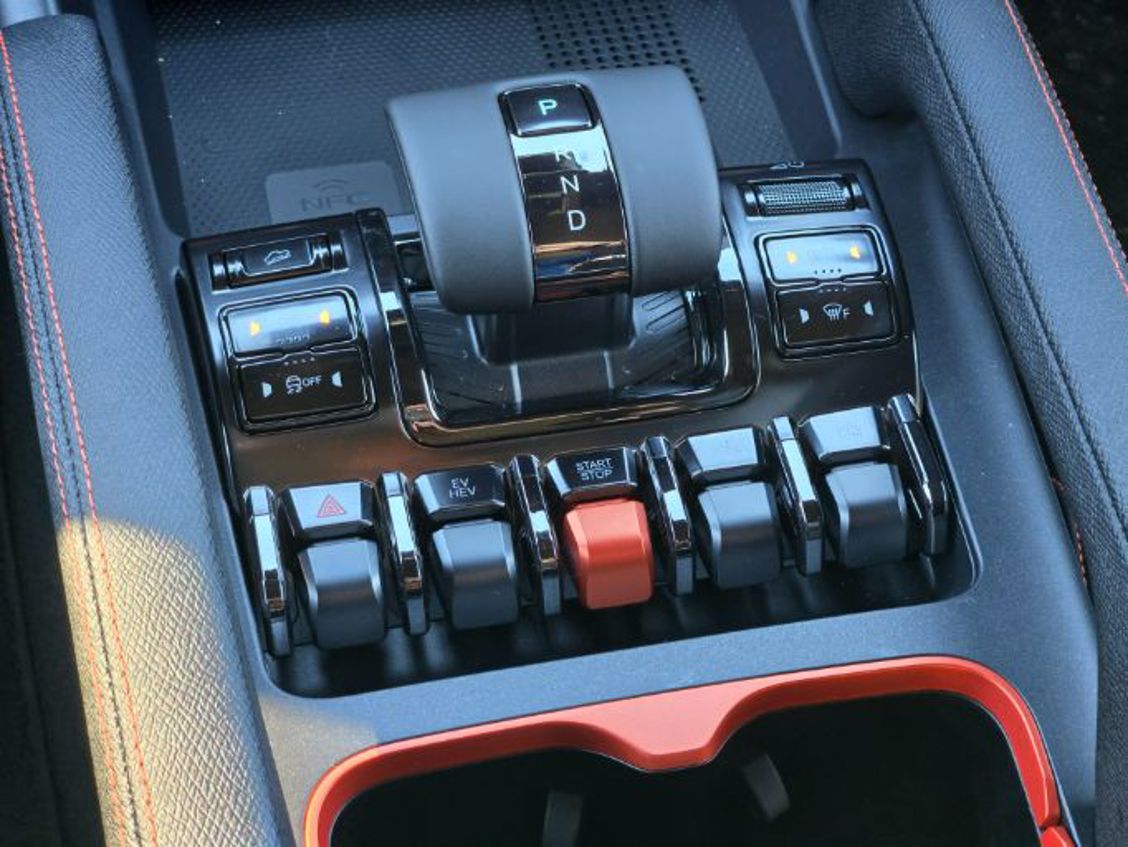
The back seat is a bit of a treat in ute terms, too, with an impressive 27-degree recline that reinforces that SUV feel.
You get the obligatory-BYD enormous screen, with an infotainment OS that offers astonishingly quick touch-responses and loading. And, ahem, big type sizes, welcome when so many modern vehicles serve up such tiny fonts.
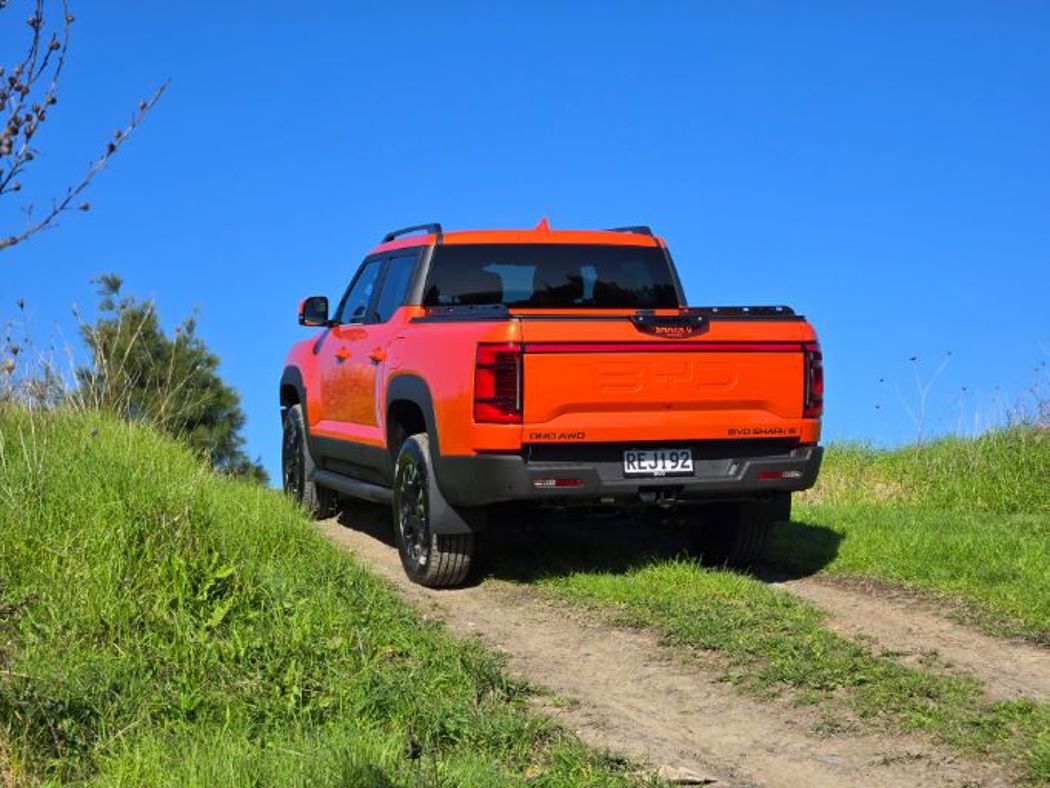
Yes, there are some compromises in the Shark’s electrification. The powertrain makes it heavy at 2710kg, which means payload is limited to 790kg (to keep it within the gross vehicle mass of 3.5t). So it’s not strictly a “one tonner” in that sense… but then neither is a Raptor. In a similar way, Shark is only rated to tow 2.5t, to keep it below the 6t gross vehicle mass you’re allowed on a car licence.
Off-road, it has a pretty good approach angle: at 31deg, 1deg better than a Ranger Wildtrak. But the electric platform means just 200mm ground clearance, which is okay by SUV standards but over 30mm less than a Ranger; the tray overhang also limits the departure angle to 19.3deg (nearly 4deg less than Ranger).
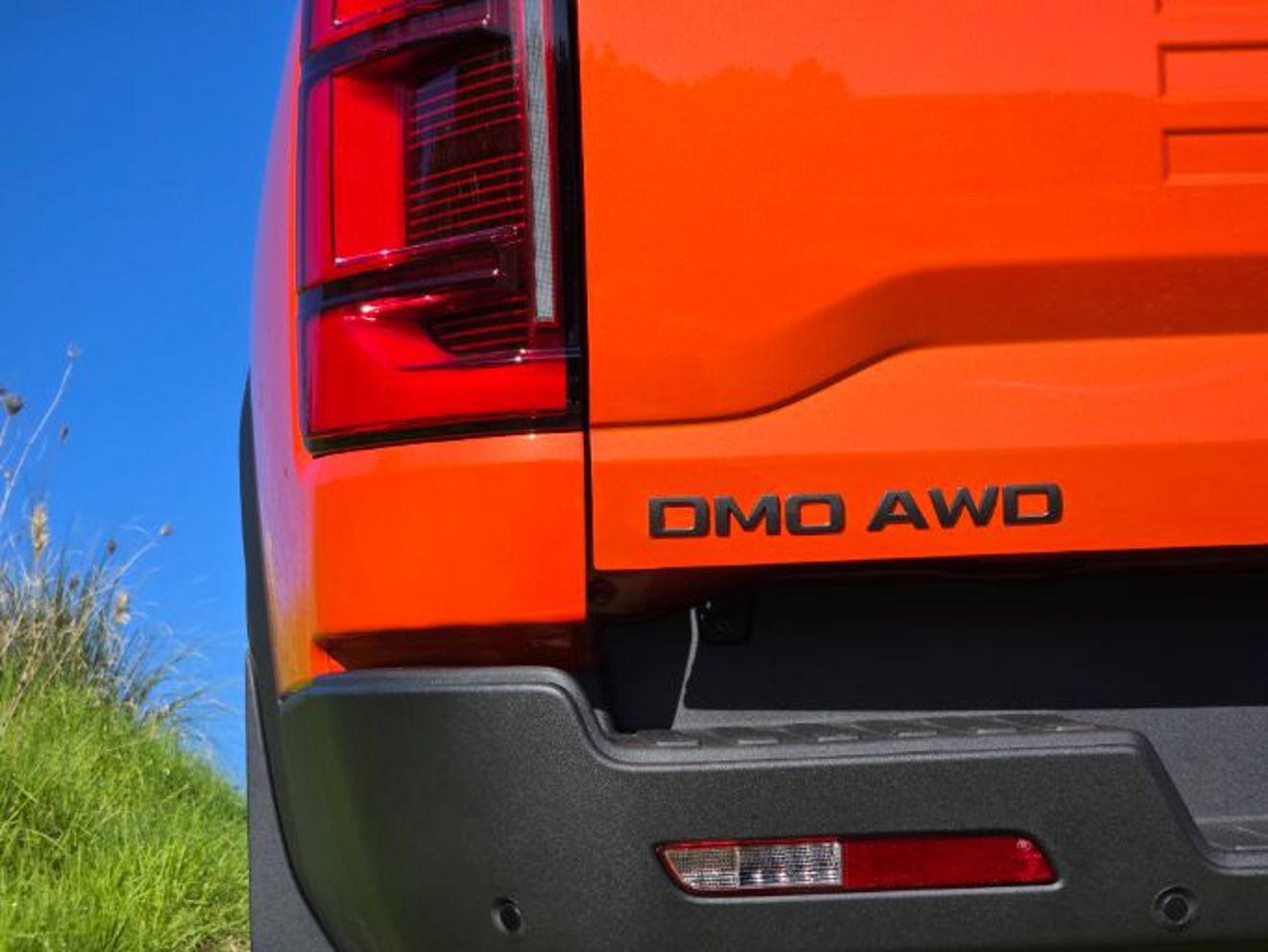
There’s no denying that electric vehicles offer incredible traction off-tarmac, because the motors can react so fast to changing surfaces; Shark 6 also offers some nifty Mud/Sand/Snow terrain modes (on a steering wheel control). It’s a great vehicle for exploring gravel tracks and lightly undulating terrain; it’s also pretty cool being able to creep through the countryside in silence.
But while double-wishbone suspension at the back does wonders for the ride and on-road handling of a vehicle like this, there’s no way it can offer anything close to the articulation and ultimate off-road ability of a trad-ute.
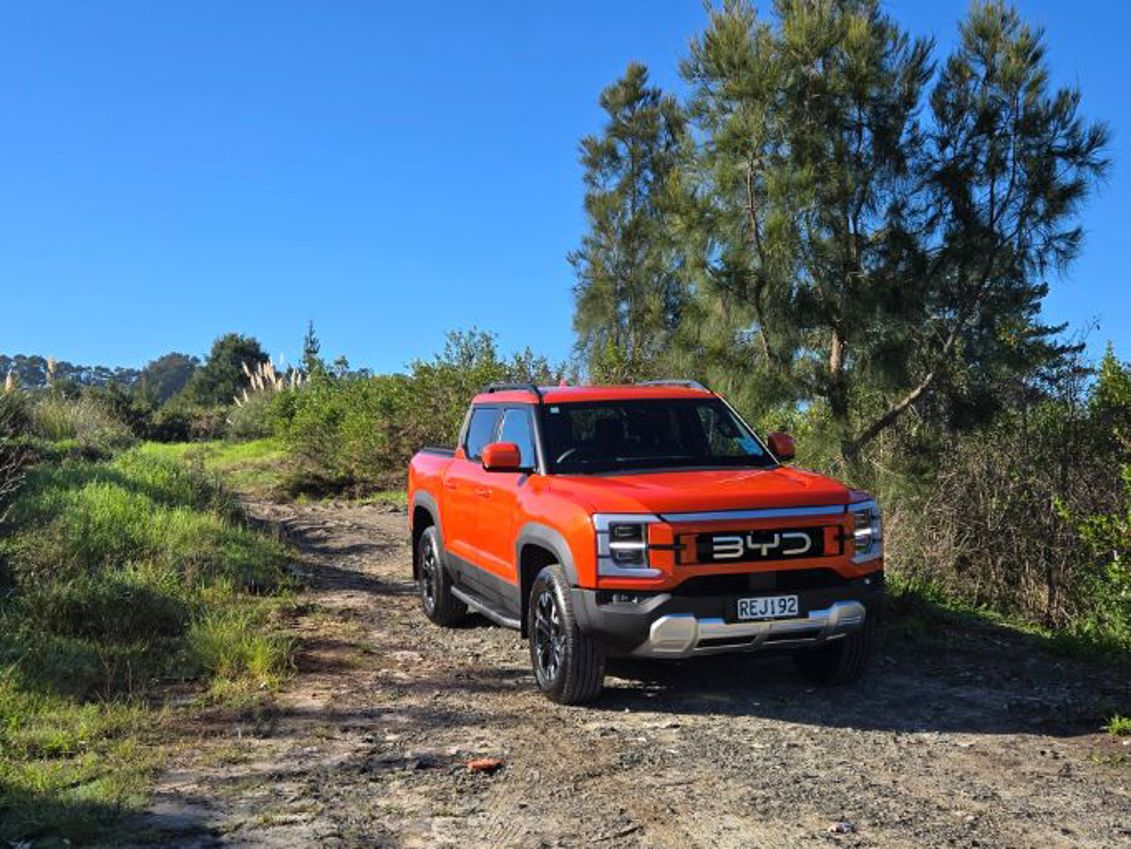
Like we said, Shark 6 is an EV first, 4x4 ute second. But it’s an incredibly good EV and it’s fair to say it’s more than capable of doing the carrying, towing and off-tarmac driving that 80% of double-cab ute buyers might want or need. It’s a welcome option in a market that’s been same-same for so long, and at $69,990 substantially cheaper than established diesel-engine rivals with similar lifestyle-appeal.
How much is the BYD Shark 6?
BYD's new ute comes in just model: the rather luxurious Premium, at $69,990.
What are the key statistics for the BYD Shark 6?
The hybrid powertrain is essentially a range-extender. The 29.58kWh plug-in battery can provide around 80km of EV range (according to our testing, although the claim is 100km), but there's also a 1.5-litre petrol engine that can act as a generator when required. Combined power is 321kW/650Nm.
Is the BYD Shark 6 efficient?
It's thrify for a ute of this size no matter how you look at it, but the actual efficiency depends on how you use it. You could potentially run it just as an EV and use no fuel at all, for example. But for the record, BYD claims 2.0l/100km when the battery is between 25-75% charge, or 7.9l/100km at 25%.
Is the BYD Shark 6 good to drive?
It's fast, smooth and handles well. The dual-motor electric powertrain also provides impressive traction on wet or loose surfaces.
Is the BYD Shark 6 practical?
The cabin is luxurious and comfortable; the rear seat is especially good for a ute. The 1200-litre tray capacity is useful, although note that payload is limited to 790kg to keep the heavy Shark 6 under 3.5t gross vehicle mass.
What do we like about the BYD Shark 6?
There's scope for a lot of pure-electric driving and the charging options are good; but even when you have to do a long journey, the hybrid powertrain removes all range anxiety. The cabin is really comfortable and well-finished, while the V2L functionality is really useful in a variety of situations - everything from charging tools to camping.
What don’t we like about the BYD Shark 6?
Payload and tow numbers are important in the ute-world and the Shark 6 is down on many rivals in both. The EV platform doesn't allow for the same high level of ground clearance as many rival utes and the road-biased rear suspension doesn't offer the kind of axle articulation required for really serious off-road driving.
What kind of person would the BYD Shark 6 suit?
Somebody who loves the idea of electric power (including that V2L stuff) and isn't worried about giving up a little hauling and 4x4 ability to have it. Or somebody who's always wanted a ute, but has been put off by the eco-unfriendly image that traditional models project.
BYD Shark 6 special offer
$5K Your Way: $5K off the range, including on the BYD Shark 6. T&Cs apply. See it at Andrew Simms:
- Newmarket: 50 Great South Road, Epsom, Auckland 1051, tel 09 399 2526.
- North Shore: 155 Wairau Road, Wairau Valley, Auckland 0627, tel 09 399 2670.
- Botany: : Botany Town Centre Shop SP0804/588 Chapel Road, Botany, Auckland 2016, tel 09 399 2526.




